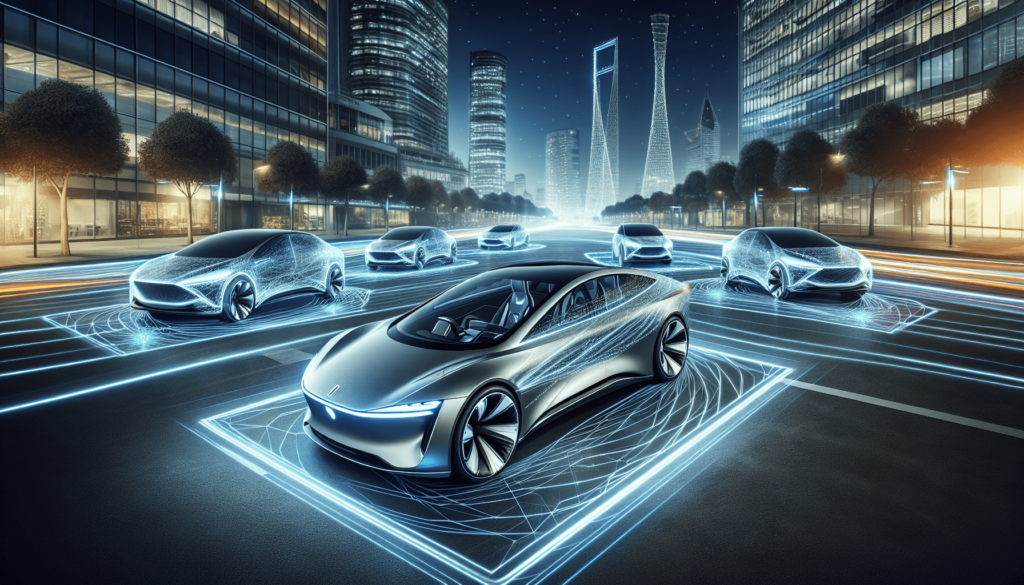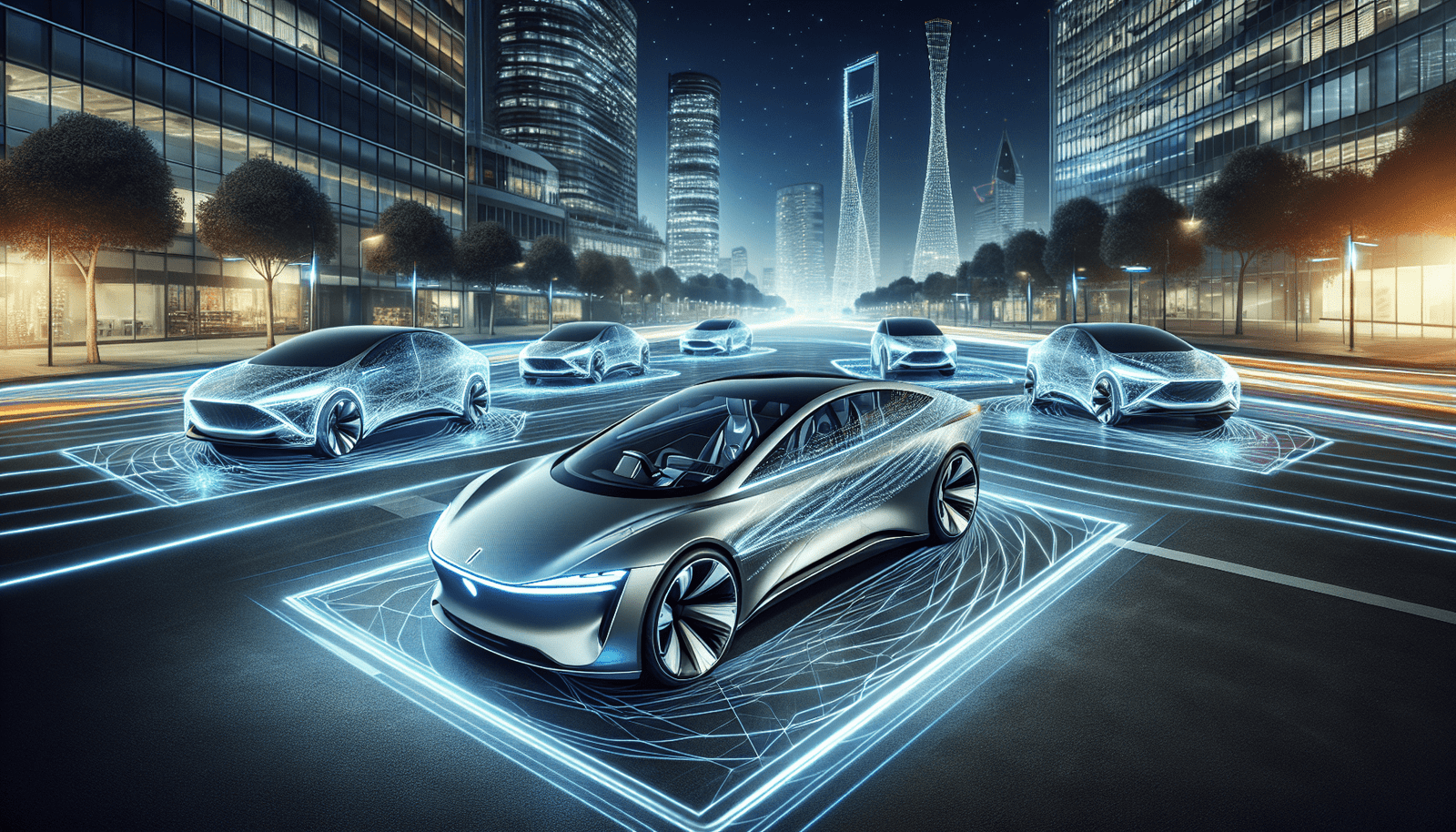Imagine driving on the road, seamlessly navigating through traffic with the assistance of groundbreaking technology that allows vehicles to communicate with each other. Sounds like something out of a science fiction movie, right? Well, believe it or not, this technology is no longer just a figment of our imagination. In this article, we will explore the exciting world of vehicle-to-vehicle (V2V) communication and discover the latest innovations that are reshaping the way we travel on the roads. So fasten your seatbelt and get ready for a thrilling ride into the future of transportation.

This image is property of pixabay.com.
History of V2V Communication
Early efforts
The concept of vehicle-to-vehicle (V2V) communication has been explored for several decades. In the early days, researchers and engineers recognized the potential of allowing vehicles to exchange information with each other in real-time. This would enable them to respond to potential hazards and improve overall road safety. While the technology and infrastructure required for V2V communication were not yet available, early efforts focused on developing the foundational concepts and building a framework for future advancements.
Emergence of dedicated short-range communication (DSRC)
One of the significant milestones in V2V communication was the emergence of dedicated short-range communication (DSRC). DSRC is a wireless communication technology specifically designed for vehicles to exchange data over short distances. It operates in the 5.9 GHz frequency band and allows for high-speed, low-latency communication between vehicles. DSRC became a key technology in enabling V2V communication and laid the foundation for subsequent developments in the field.
Development of V2V standards
The development of V2V standards was crucial in ensuring interoperability and widespread adoption of the technology. Standardization bodies, such as the Institute of Electrical and Electronics Engineers (IEEE) and the Society of Automotive Engineers (SAE), played a vital role in defining the protocols and specifications for V2V communication. Through collaborative efforts, standards like IEEE 802.11p were established, providing a common framework for V2V communication that could be implemented by different vehicle manufacturers and technology providers.
Benefits of V2V Communication
Enhanced safety on the road
One of the most significant benefits of V2V communication is the enhanced safety it provides on the road. By enabling vehicles to communicate with each other, they can exchange vital information about their speed, direction, and location. This real-time data allows vehicles to detect potential hazards and take appropriate actions to avoid accidents. For example, if a vehicle ahead suddenly brakes or encounters a hazard, it can send a warning signal to nearby vehicles, enabling them to react promptly and avoid a collision. V2V communication has the potential to greatly reduce accidents and save lives.
Improved traffic flow and efficiency
V2V communication also has the potential to improve traffic flow and efficiency on the roads. By enabling vehicles to share information, such as traffic conditions, road closures, and congestion, they can collaborate and adapt their routes accordingly. This real-time exchange of data allows vehicles to choose the most efficient routes, reducing congestion and minimizing travel times. Additionally, V2V communication can facilitate the coordination of traffic signals, optimizing the overall flow of vehicles and minimizing delays.
Reduction in fuel consumption and emissions
Another significant benefit of V2V communication is the potential for reducing fuel consumption and emissions. By enabling vehicles to exchange information about their speed, acceleration, and upcoming traffic conditions, they can synchronize their movements and reduce unnecessary braking and accelerating. This smooth and coordinated driving behavior leads to improved fuel efficiency and reduced emissions. V2V communication can contribute to a more sustainable transportation system by minimizing the environmental impact of vehicles.
Current State of V2V Communication
Presence of V2V technology in some vehicles
V2V technology has already made its way into some vehicles on the market today. Various automobile manufacturers have started integrating the necessary hardware and software components to enable V2V communication in their vehicles. These vehicles can communicate with each other, exchanging critical information and providing enhanced safety features.
Limited adoption and standardization
However, despite the presence of V2V technology in some vehicles, its adoption and standardization are still relatively limited. The widespread deployment and adoption of V2V communication require collaboration and agreement among various stakeholders, including automobile manufacturers, technology providers, and government regulatory bodies. Additionally, there is a need for a common set of standards and protocols to ensure interoperability and seamless communication between vehicles from different manufacturers.
Challenges and concerns
There are several challenges and concerns that need to be addressed for the widespread adoption of V2V communication. One of the major challenges is the development of robust and secure communication protocols that can withstand potential cyber threats. As V2V communication involves the exchange of sensitive and critical information, ensuring the privacy and security of the data is of utmost importance. Additionally, there are concerns regarding the reliability and accuracy of the data exchanged between vehicles, as well as the potential for false or malicious information being communicated.
Wireless Technologies for V2V Communication
DSRC
Dedicated Short-Range Communication (DSRC) is one of the primary wireless technologies used for V2V communication. DSRC operates in the 5.9 GHz frequency band and provides high-speed, low-latency communication between vehicles. It allows for the exchange of data packets containing critical information, such as location, speed, and acceleration. DSRC has been standardized by bodies like the IEEE and SAE, ensuring interoperability between different vehicles and systems.
Cellular V2X (C-V2X)
Cellular V2X (C-V2X) is another wireless technology that enables V2V communication. C-V2X leverages existing cellular networks, such as 4G LTE and upcoming 5G networks, to transmit data between vehicles. It offers both direct communication between vehicles (V2V) and communication between vehicles and infrastructure (V2I). C-V2X provides high-speed communication and can support a wide range of applications, including safety-related services and traffic management.
Wi-Fi Direct
Wi-Fi Direct is a wireless technology that allows for peer-to-peer communication between devices without the need for a traditional Wi-Fi network. It operates in the 2.4 GHz and 5 GHz frequency bands and provides a simple and straightforward way for devices to establish a direct connection. The use of Wi-Fi Direct for V2V communication offers the advantage of widespread compatibility, as most modern devices are equipped with Wi-Fi capabilities. However, the range of Wi-Fi Direct is relatively limited compared to other technologies like DSRC and C-V2X.

This image is property of pixabay.com.
V2V Communication Protocols
IEEE 802.11p
IEEE 802.11p, also known as Wireless Access in Vehicular Environments (WAVE), is a communication protocol specifically developed for V2V and V2I communication. It operates in the 5.9 GHz frequency band and provides low-latency, high-speed communication between vehicles. IEEE 802.11p defines the message formats, communication channels, and security mechanisms required for reliable V2V communication. It has been widely adopted and serves as the foundation for DSRC-based V2V communication systems.
LTE-V2V
LTE-V2V is a communication protocol based on the Long-Term Evolution (LTE) cellular network standard. It enables vehicles to communicate with each other and exchange critical information over cellular networks. LTE-V2V provides reliable and secure communication, supporting various safety and traffic management applications. It leverages the existing infrastructure of cellular networks, making it a cost-effective solution for widespread deployment of V2V communication.
5G NR-V2V
5G New Radio Vehicle-to-Vehicle (5G NR-V2V) is a communication protocol specifically designed for V2V communication in the upcoming 5G networks. It offers ultra-low latency, high data rates, and superior network capacity, enabling a wide range of advanced applications. 5G NR-V2V provides a scalable and flexible solution for V2V communication, supporting advanced features like platooning, cooperative perception, and collective decision-making. It is expected to revolutionize V2V communication and enable the integration of V2V with other emerging technologies, such as autonomous vehicles.
V2V Communication Applications
Collision avoidance and warning systems
Collision avoidance and warning systems are one of the primary applications of V2V communication. By enabling vehicles to exchange information about their speed, acceleration, and position, they can detect potential collision risks and issue warnings to the drivers. These systems can alert drivers about potential hazards, such as sudden lane changes, intersection conflicts, or emergency braking, allowing them to take appropriate actions to prevent accidents.
Emergency vehicle alerts
V2V communication can also facilitate faster and more efficient emergency vehicle alerts. When an emergency vehicle, such as an ambulance or firetruck, is approaching, it can send a signal to nearby vehicles, notifying them of its presence and urging them to make way. This proactive communication enables vehicles to clear a path quickly, reducing response times for emergency services and improving the safety of everyone on the road.
Cooperative adaptive cruise control
Cooperative Adaptive Cruise Control (CACC) is an advanced application of V2V communication that enhances the performance of adaptive cruise control systems. In CACC, vehicles not only maintain a safe distance from the vehicle ahead but also communicate with each other to synchronize their movements. This collaboration allows vehicles to travel in closer proximity, forming platoons that can reduce aerodynamic drag and improve fuel efficiency. CACC has the potential to significantly improve traffic flow, especially in congested areas.

This image is property of pixabay.com.
Privacy and Security Considerations
Protection against cyber attacks
As V2V communication involves the exchange of sensitive information between vehicles, protecting against cyber attacks is of utmost importance. Robust security measures, such as encryption and authentication protocols, need to be implemented to ensure the integrity and confidentiality of the data exchanged. Additionally, continuous monitoring and vulnerability assessments are necessary to identify and mitigate potential security threats.
Anonymity of vehicle data
Preserving the anonymity of vehicle data is another important privacy consideration in V2V communication. While it is necessary for vehicles to exchange information, measures should be taken to prevent the identification of individual vehicles or tracking of their movements. By anonymizing the exchanged data, the privacy of the drivers and passengers can be protected while still reaping the benefits of V2V communication.
Data sharing policies
Establishing clear data sharing policies and consent mechanisms is crucial to address privacy concerns in V2V communication. Vehicle owners should have control over the data generated by their vehicles and the ability to decide which information is shared with other vehicles. Transparent and user-friendly policies can help build trust among drivers and ensure that their privacy rights are respected.
Government Regulations and Initiatives
National Highway Traffic Safety Administration (NHTSA) rules
The National Highway Traffic Safety Administration (NHTSA) in the United States has been actively involved in shaping the regulations and standards for V2V communication. In 2016, the NHTSA proposed a rule that would require all new light vehicles to be equipped with V2V communication technology. This rule aimed to accelerate the deployment and adoption of V2V communication and enhance road safety.
European Union Commission regulations
The European Union (EU) Commission has also been working towards the adoption of V2V communication. In 2019, the EU introduced new regulations that mandate the inclusion of intelligent transport systems (ITS), including V2V communication, in all new vehicles. This move is part of the EU’s initiative to improve road safety and reduce accidents across member states.
Collaboration between industry and governments
There has been significant collaboration between industry stakeholders and governments to drive the adoption and standardization of V2V communication. Automakers, technology providers, and regulatory bodies have been working together to address technical challenges, define industry standards, and ensure a smooth transition towards the widespread deployment of V2V communication. This collaboration is vital to ensure the success and effectiveness of V2V communication systems.

Research and Development Efforts
Testing and deployment of V2V technology
Extensive research and development efforts are being conducted to test and deploy V2V technology in real-world environments. Researchers and automakers are conducting large-scale trials and pilot projects to assess the performance and effectiveness of V2V communication systems. These efforts involve deploying V2V-enabled vehicles on public roads, collecting data, and evaluating the impact of V2V communication on road safety, traffic flow, and overall driving experience.
Evaluating performance and reliability
Performance and reliability are critical factors in the adoption of V2V communication. Ongoing research focuses on evaluating the performance of different wireless technologies, communication protocols, and data processing algorithms. Researchers are assessing factors such as communication range, latency, data accuracy, and network congestion to ensure that V2V communication systems operate efficiently and reliably under various conditions.
Exploring advanced features and applications
The future of V2V communication lies in the exploration of advanced features and applications. Researchers and engineers are actively working on developing algorithms and models to enable more complex V2V interactions, such as cooperative perception and collective decision-making. Additionally, efforts are being made to integrate V2V communication with other emerging technologies, such as autonomous vehicles, to enhance their capabilities and enable safer and more efficient transportation systems.
Future Trends in V2V Communication
Integration with autonomous vehicles
As autonomous vehicles become more prevalent, the integration of V2V communication with autonomous systems will be a key trend in the future. V2V communication can provide autonomous vehicles with additional situational awareness, allowing them to better navigate complex traffic scenarios and make more informed decisions. By enabling autonomous vehicles to communicate with each other, they can coordinate their movements and optimize traffic flow, further improving efficiency and safety.
Expanding V2V capabilities with 5G
The deployment of 5G networks will significantly enhance the capabilities of V2V communication. 5G networks offer ultra-low latency, high data rates, and superior network capacity, enabling faster and more reliable communication between vehicles. This opens up new possibilities for advanced V2V applications, such as cooperative platooning and real-time traffic management. The combination of V2V communication and 5G technology has the potential to revolutionize the transportation industry and pave the way for a more connected and efficient future.
Growing industry partnerships
As V2V communication continues to evolve, we can expect to see increased collaboration and partnerships among industry stakeholders. Automakers, technology providers, and infrastructure operators will work together to develop and deploy V2V communication systems, leveraging their expertise and resources. These partnerships will be instrumental in driving innovation, addressing technical challenges, and ensuring the seamless integration of V2V communication into the transportation ecosystem.
In conclusion, V2V communication holds immense potential to revolutionize the way we drive and interact on the roads. Its ability to enhance safety, improve traffic flow, and reduce fuel consumption and emissions provides compelling benefits for drivers, passengers, and society as a whole. While there are still challenges and concerns that need to be addressed, ongoing research, development, and collaboration efforts are paving the way for a future where V2V communication is an integral part of our transportation systems.


